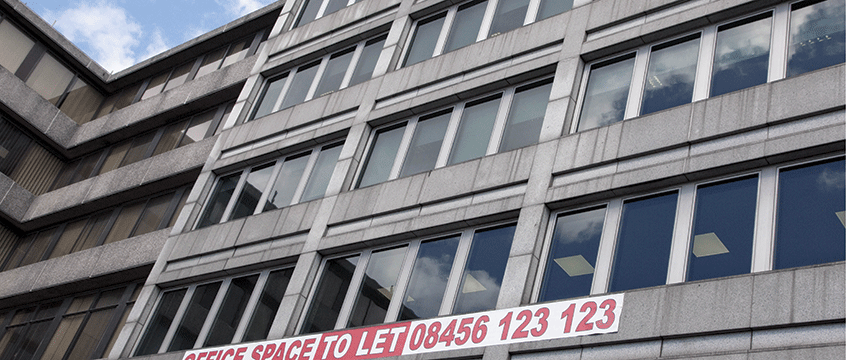The enforceability of covenants is generally considered to be of the essence of a lease, and it is not widely appreciated that section 84 of the Law of Property Act 1925 enables both freeholders and leaseholders to ask for restrictive covenants to be modified or discharged.
Applications by leaseholders are relatively rare. But Shaviram Normandy Ltd v Basingstoke and Deane Borough Council [2019] UKUT 256 (LC); [2019] PLSCS 184 reminds us that tenants with leases for more than 40 years are entitled to take advantage of the rules, once the first 25 years of their term have expired: section 84(12).
Office to residential conversion
The case concerned a large office building in Basingstoke, Hampshire. It was situated in a prime location, close to other office buildings and several modern apartment blocks, and was owned by the council. The building was let on a long lease, in return for a 15.5% share of the net annual income. And because the lease did not reserve a minimum rent, the tenant was obliged to use its best endeavours to keep the offices fully let.
Key points
- The modification of a user covenant can unlock the development potential of leasehold land
- Landlords are not entitled to any greater protection than freeholders for the purposes of section 84 of the Law of Property Act 1925
- A tenant’s obligation to use its “best endeavours” to keep premises fully let had an important impact on valuation and on the interpretation of its repairing covenant
Despite the obligation, the building was empty. It had fallen into disrepair, and the tenant wanted to convert it into flats and let them to assured shorthold tenants at open-market rents. The council, in its capacity as the planning authority, had confirmed that the change of use fell within permitted development rights but it wanted the tenant to repair the building and let it to office tenants.
So the tenant asked the Upper Tribunal (Lands Chamber) to modify the user covenant. It relied, in particular, on section 84(1)(aa): the continued existence of the restriction would impede some reasonable user of the land and did not secure practical benefits of substantial value or advantage. The parties agreed that it would be reasonable to use the building for residential purposes. Consequently, the case turned on whether the council obtained any benefit or advantage from the user restriction in the lease.
Best endeavours
The tenant’s covenant to use its best endeavours to keep the offices fully let played an important part in valuing the benefit of the user covenant, and underlines the potential impact of such obligations.
The lease required the tenant to keep the building in good and substantial repair throughout the term. So the tenant argued that it was not obliged to improve or upgrade the facilities to attract new office tenants and that the tribunal must consider the value of the building “in repair” when it was assessing the benefit of the user covenant, and not the value that might be achieved through comprehensive refurbishment.
But this ignored the impact of the tenant’s “best endeavours” letting obligation on the construction of the repairing covenant. If a reasonable building owner seeking to maximise lettings would do more than keep a building in repair, which was the case here, the tenant must do so too. And, given the lease was for 150 years, it was inevitable that the steps the tenant was required to take should include periodically upgrading the facilities to the standard expected in the market from time to time, rather than simply repairing the building.
Benefits or advantages
After considering the figures put forward by the parties, the judge decided that if the building were to be refurbished for office use, the council was likely to receive approximately £15,500 more in annual rent than it would receive for residential use. But rents were likely to fluctuate during the lifetime of the lease and, although a refurbished office building would be worth £3m, the building would be worth £3.125m if it were to be converted into flats.
The tribunal also considered the council’s position as the freehold owner of land in the vicinity, as well as whether there would be any economic advantages for the town if office use were to continue. However, the judge did not believe that the relaxation of the covenant would significantly increase the risk of further relaxations of similar covenants affecting other buildings close by, or that the retention of office use would make a significant contribution to employment or the economic wellbeing of the town. The council’s previous willingness to contemplate a change of use also undermined its stance – and the judge held that the user restriction did not protect practical benefits of substantial value or advantage.
Special case
In Ridley v Taylor [1965] 193 EG 1121, Harman LJ suggested it would be more difficult to persuade the court to exercise its discretion under section 84 in the case of a landlord, who is “prima facie entitled to preserve the character of his reversion”. But the tribunal rejected the argument that it should be particularly cautious where covenants affect leasehold land.
Parliament had already recognised the special position of landlords by excluding leases for up to 40 years from section 84, and by requiring the first 25 years of longer leases to have expired. A landlord did not enjoy any greater protection than that, and its case must stand on its own two feet.
The tenant sought a consequential modification of another covenant in the lease, requiring sublettings to be on terms and at a market rent approved by the council. But the tribunal was not satisfied the covenant restricted the use of land. Also, the council had an interest in the rents charged. So the requirement for consent would still serve the purpose for which it was designed – and was not obsolete.
Allyson Colby is a property law consultant








